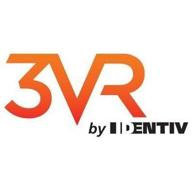Deep Learning
Revolutionizing Industries: Deep Learning's Impact on Autonomous Vehicles, Healthcare, and Financial Forecasting
Deep learning, a subset of artificial intelligence, has emerged as a powerful tool transforming various industries. From autonomous vehicles to healthcare and financial forecasting, the applications of deep learning have sparked groundbreaking advancements. In this article, we explore the profound impact of deep learning models on autonomous vehicles, the innovative applications of deep learning in healthcare, and the transformative role of deep learning advancements in financial forecasting.
The Journey of Deep Learning Models in Autonomous Vehicles
Autonomous vehicles have long been an ambitious goal for the transportation industry, aiming to enhance safety and efficiency while revolutionizing the way we travel. Deep learning models have played a pivotal role in this endeavor. By leveraging neural networks and vast amounts of data, deep learning models can accurately interpret sensor inputs, identify objects and obstacles, and make real-time decisions. This enables autonomous vehicles to navigate complex environments, anticipate road conditions, and respond swiftly to ensure passenger safety. With continuous advancements in deep learning algorithms, the future of autonomous vehicles looks promising.
Transforming Healthcare with Deep Learning
Deep learning has unleashed a wave of innovation in the field of healthcare. By harnessing its capabilities, healthcare professionals can leverage large datasets to derive valuable insights, improve diagnostics, and enhance patient care. Deep learning models are being used to interpret medical images, such as X-rays and MRIs, with remarkable accuracy, assisting radiologists in detecting diseases and abnormalities. Additionally, deep learning algorithms are employed to analyze electronic health records, patient data, and genomic information, aiding in disease diagnosis, treatment planning, and personalized medicine. The applications of deep learning in healthcare are vast, promising to revolutionize the industry by providing faster, more accurate diagnoses and optimizing treatment outcomes.
The Intersection of Deep Learning and Financial Forecasting
In the realm of finance, accurate forecasting is of paramount importance for making informed decisions. Deep learning advancements have made significant contributions to this domain. By leveraging complex neural networks and processing vast amounts of financial data, deep learning models can uncover intricate patterns and relationships that traditional forecasting methods might overlook. These models can provide insights into market trends, predict stock prices, optimize investment portfolios, and even assist in risk management. Financial institutions are increasingly adopting deep learning algorithms to gain a competitive edge and make data-driven decisions that lead to improved outcomes and profitability.
The Promising Future of Deep Learning
As deep learning continues to advance, the possibilities for its application across various industries are limitless. From autonomous vehicles to healthcare and financial forecasting, deep learning models have already demonstrated their potential to revolutionize these fields. With ongoing research, development, and refinement, deep learning is poised to drive further innovation, ushering in a future where AI-powered technologies will continue to transform the way we live, work, and interact with the world around us.

1 Review
Ultinous offers its video analysis services through a dedicated platform, UVAP (Ultinous Video Analysis Platform). UVAP is a set of software services that can be composed and extended in a flexible way to build scalable AI-based video analysis capability and functionality.


1 Review
OpenAI is an AI research and deployment company. Our mission is to ensure that artificial general intelligence benefits all of humanity. We are building safe and beneficial AGI, but will also consider our mission fulfilled if our work aids others to achieve this outcome. We are governed by a nonprofit and our unique capped-profit model drives our…
Read more about this company

1 Review
3VR is a video technology and data company that solves the challenges associated with video searchability, allowing customers to rapidly gather real-time intelligence from the unstructured video data that is produced by a single camera or a global network of cameras.


1 Review
The Digital Ark offers digital archiving and media development solutions to preserve, manage and share collections online, and to engage visitors on-site.


1 Review
Cloudsight is an image recognition API providing true understanding for your digital media.
- Deep learning software refers to a category of computer programs and tools that are designed to implement and support deep learning algorithms. It provides the necessary infrastructure and libraries for training and deploying deep neural networks, allowing researchers and developers to build and apply complex machine learning models.
- Deep learning software typically includes features such as neural network architectures, optimization algorithms, automatic differentiation, GPU acceleration, and support for large-scale data processing. These features enable efficient training of deep neural networks on diverse datasets and facilitate the development of sophisticated deep learning models.
- Deep learning software often supports popular programming languages such as Python and R. These languages provide extensive libraries and frameworks, such as TensorFlow, PyTorch, and Keras, which are widely used for deep learning tasks. The availability of these programming languages and frameworks offers flexibility and ease of implementation for developers.
- There are several popular deep learning software frameworks, including TensorFlow, PyTorch, Caffe, and Theano. These frameworks provide high-level APIs, extensive documentation, and a wealth of pre-built models and tools, making it easier for researchers and developers to build and deploy deep learning models. Each framework has its unique features and strengths, catering to different use cases and preferences.

